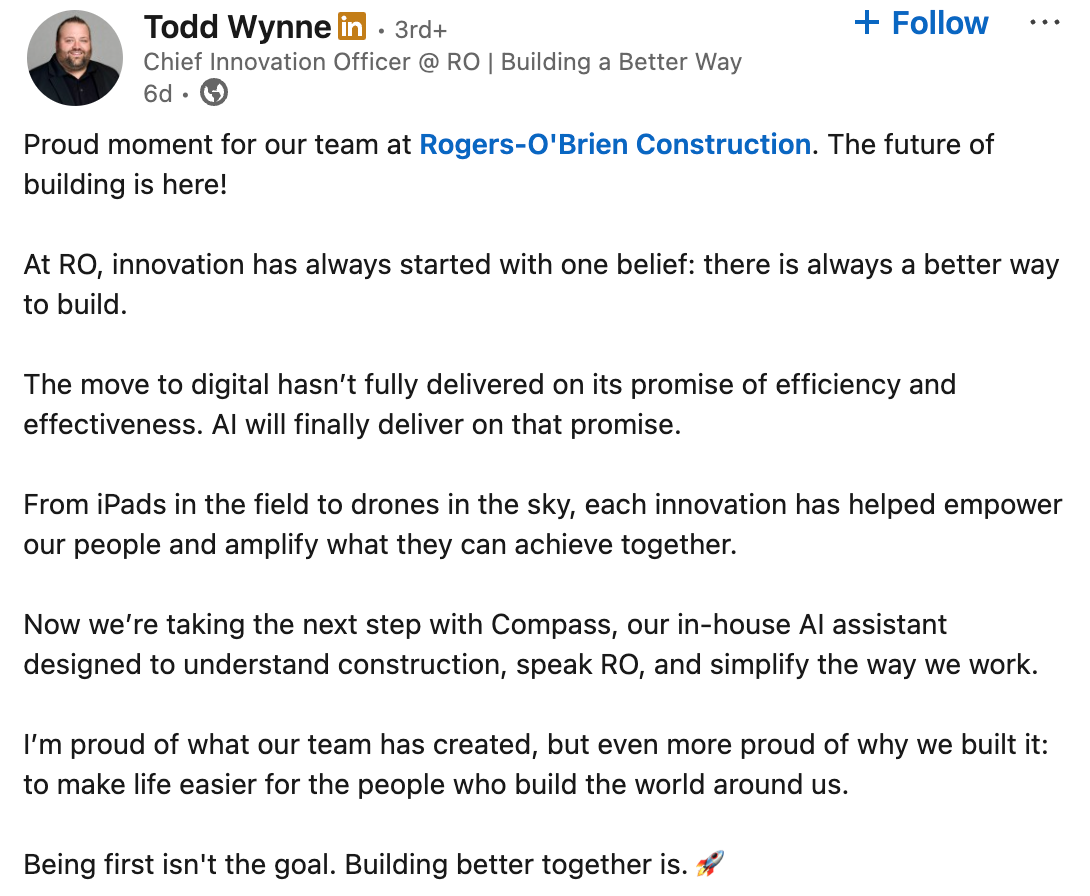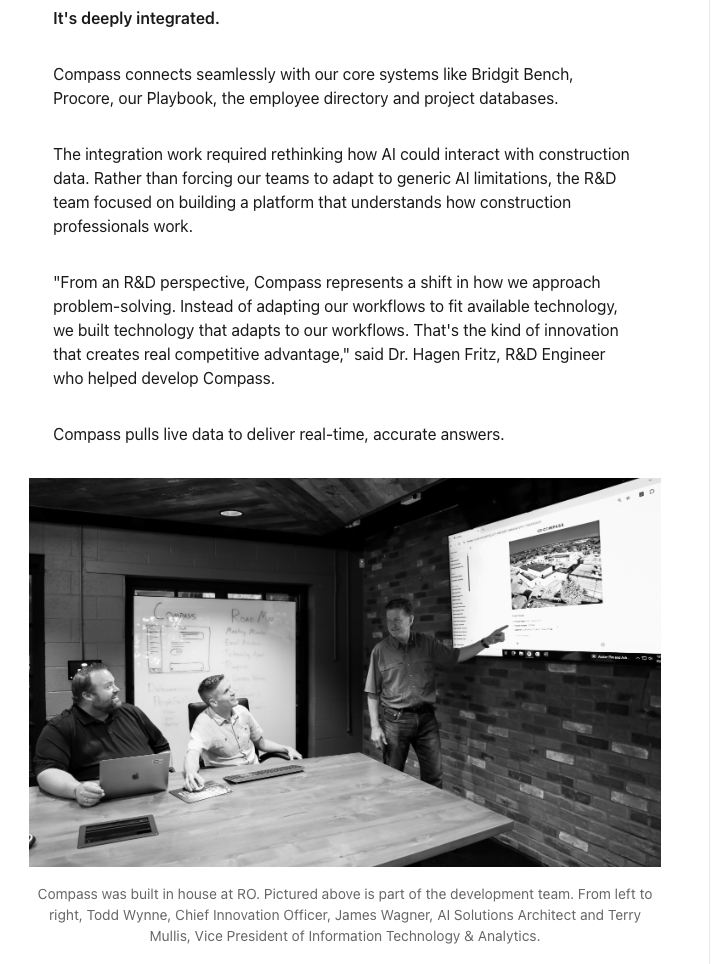Use 8 criteria to decide: build custom AI agent infrastructure or buy a platform. Evaluate team focus, integration, timeline, scaling, and costs.
You became an AI engineer to build intelligent agents. Instead, you're debugging OAuth flows and explaining why the next workflow is delayed another three weeks.
Every new agent needs data from another system. Every system needs a custom connector. Every connector breaks when APIs change. Integration work consumes your capacity while agents that should be processing documents and automating workflows sit half-built.
The question isn't whether you can build infrastructure—you obviously can. It's whether spending the next several quarters on connectors makes sense when platforms put agents in production within weeks.
This guide walks through eight criteria that reveal which path fits your reality: team focus, integration complexity, timeline pressure, scaling plans, maintenance capacity, costs, control requirements, and vendor risk.
Why Build vs. Buy is a Critical AI Agent Infrastructure Question
Choosing between building or buying your agent infrastructure can be a tough choice. Both options give you advantages and disadvantages. Here's how they break down.
Pros and Cons of Building an AI Agent Infrastructure
Building your own agent infrastructure gives you complete control over every architectural decision. You choose how agents orchestrate workflows, how data flows between systems, and how security policies apply across your stack.
No vendor can deprecate features you depend on or change pricing when you're mid-project. If you have truly unique requirements, unusual compliance mandates, or proprietary data formats, custom builds let you handle them exactly as needed.
The cost shows up in timelines and team focus. Custom builds require months before your first agent reaches production. Your engineering budget goes directly to infrastructure development, then continues paying for permanent maintenance staff.
Every API change, security patch, and scaling challenge becomes your team's problem. AI engineers who signed up to build intelligent workflows end up maintaining connectors instead.
Pros and Cons of Buying AI Agent Infrastructure
Platform solutions flip this completely. Pre-built connectors and managed infrastructure put agents in production within weeks instead of quarters.
Vendors handle the ongoing maintenance, API updates, security patches, and infrastructure scaling through predictable subscription fees. Your team focuses on agent intelligence from day one: designing workflows, optimizing reasoning, and building automation that delivers business value.
The trade-off is real. You accept vendor dependency and less control over the underlying infrastructure. Platforms may not support highly specialized workflows without custom development.
But your engineers work on what actually differentiates your business: intelligent agent behavior, rather than rebuilding the integration infrastructure every company needs.
The decision comes down to resource allocation: whether your engineering time goes toward building infrastructure or building intelligent agents that process business data.

7 Criteria to Decide Build vs Buy AI Agent Infrastructure
Before you decide whether to build custom infrastructure or adopt a platform, measure each option against eight realities that shape every AI-agent rollout. The more honestly you score yourself on these factors, the clearer your path becomes.
Criteria #1: Team Focus and Engineering Capacity
Your AI engineers' time goes one of two places: building intelligent agents or maintaining infrastructure.
With custom AI agent building, you get complete control over your architecture. You decide how everything connects and how data flows through your systems. This control proves valuable when you have truly unique requirements that platforms can't support.
The challenge? Most of your team's time goes to connector maintenance, API debugging, and OAuth troubleshooting. Your engineers get really good at webhook configuration when what you actually need is sophisticated workflow orchestration. Each new data source adds another integration to maintain.
When APIs change, and they always do, your team drops everything to patch broken connections. The work compounds over time as your integration web grows more complex.
With platform solutions, you get your engineers building agent intelligence from day one. They design workflows, optimize reasoning, and create business automation. The authentication, rate limiting, and data transformation all happen in the background through pre-built connectors.
Your team spends time on what actually differentiates your business. Teaching agents to handle complex document analysis. Building multi-step automation workflows.
Refining decision logic based on real usage patterns. Daily work shifts from invisible plumbing to visible impact. Instead of standups about integration outages, your team discusses which business processes to automate next.
The trade-off? You accept less control over the underlying infrastructure. You're dependent on the vendor's roadmap for new connectors and features. If you need to integrate with highly specialized systems, you might still need custom development work.
Criteria #2: Integration Complexity and Data Access
Enterprise data lives everywhere: CRM, ERP, ticketing systems, project management tools, and your agents need all of it to deliver real value.
With custom AI agent building, you get complete control over how data flows through your systems. You write custom connectors for every data source, handling different authentication methods, rate limits, and data formats exactly how you want.
This flexibility proves valuable when you're connecting to highly specialized or proprietary legacy systems that no platform supports. You can build authentication logic tailored to your exact needs and handle unusual data formats that pre-built connectors don't accommodate.
But you might end up with a system that only integrates with a few sources.

The challenge comes when APIs change. You finally stabilize the Salesforce webhooks, then HubSpot changes its rate limiting, and suddenly, two workflows break at once. Each new integration adds to a maintenance web that grows faster than you expect.
With platform solutions, you get vendor-maintained connectors that handle these moving targets. When APIs change, the vendor updates the connectors while your team focuses on agent logic.
You get unified data access through configuration, instead of building yet another custom wrapper. For standard enterprise platforms, the coverage is solid, and you connect to them in hours rather than weeks.
The trade-off is that highly specialized or proprietary systems might not have pre-built connectors, requiring custom development work. But for the standard enterprise tools most companies use, platforms eliminate months of integration work.
Criteria #3: Timeline to Value
Stakeholders care about agents processing real business data, not development milestones, and the time between kickoff and production determines whether you're iterating on insights this quarter or still building infrastructure next quarter.
With custom AI agent building, you get complete control over your architecture and implementation timeline. You build exactly what you need without vendor constraints. You make every infrastructure decision yourself.
You own your deployment pipeline, and you aren't dependent on vendor roadmaps or release schedules.
Here's what actually happens. You spend months before your first agent goes live. You're building data pipelines, implementing orchestration logic, hardening security, and navigating compliance reviews.
The business waits while your budget burns. Something always takes longer than planned, an integration proves trickier than expected, security adds requirements, or a key dependency shifts.
With platform solutions, you get agents in production within weeks instead of months. You connect systems, build agents, and deploy to production in parallel. You start learning from actual usage data while the project still has momentum.
That early feedback matters because you prove measurable value while custom-built teams are still arguing about architecture decisions. The platform handles infrastructure concerns like security, scaling, and monitoring automatically.
But you're working within the platform's constraints. If you need highly customized orchestration logic or unusual deployment patterns, you might need workarounds or custom extensions.
Criteria #4: Scaling and Maintenance Burden
One agent with three integrations is manageable. Fifty agents with hundreds of integrations is where maintenance becomes a full-time job.
With custom AI agent building, you get an architecture built for today. You optimize for your current use cases and avoid paying for scale you don't need yet.
Here's what growth looks like. Your first agent connects to three systems. Maintenance takes a few hours per month when APIs change. Then you add more agents.
Each one needs more integrations. Salesforce deprecates an endpoint. HubSpot changes rate limiting. ServiceNow updates authentication. Your maintenance burden grows exponentially, not linearly.
What started as a few hours per month becomes someone's full-time job. Then two people's jobs. APIs break at unpredictable times. Security patches need immediate attention.
When the engineer who built your document processing pipeline leaves, someone else inherits hundreds of integration points they didn't design. You face a choice: keep patching or pause everything to rebuild.
With platform solutions, you get infrastructure that handles scale and maintenance centrally. When you deploy your fiftieth agent, the vendor maintains all the integrations.
When APIs change, they update connectors once and every agent benefit. Your maintenance burden stays relatively flat because the vendor handles infrastructure updates.
But you're paying for those capabilities from day one, even if you're running just a handful of agents. You might be over-investing early on.
Criteria #5: Cost Structure and Total Cost of Ownership
Most teams calculate initial development costs and stop there. The real expense shows up in year two and beyond.
With custom AI agent building, you get complete control over your budget allocation. You decide where engineering time goes and how infrastructure spending happens. For teams with existing engineering capacity, the initial investment looks manageable because salaries are already budgeted.
Here's what the numbers actually look like. You spend months of senior engineering time before your first agent delivers value. Then the costs keep coming. Permanent maintenance staff. Hosting infrastructure that scales with usage. Security audits. Monitoring tools. Every API change means engineering hours.
Every new integration adds to maintenance overhead. The cost curve climbs year after year because infrastructure requires constant attention. When an engineer leaves, you're paying to replace specialized knowledge, not just filling a position.
With platform solutions, you often get a baseline subscription fee, but your total costs typically scale with usage. While you usually know your minimum monthly commitment, actual charges may vary based on consumption. The vendor spreads infrastructure and maintenance costs across customers and handles API connector and security patch updates. This structure allows your engineering budget to go toward agent intelligence instead of infrastructure upkeep, helping teams focus on building capabilities that differentiate your business.
But you're paying those subscription fees whether you're running five agents or fifty. The per-seat or per-transaction pricing adds up, especially early on when you're proving value.
You're also investing in something you don't own. If you eventually need to migrate, you're starting infrastructure work from scratch.
Criteria #6: Customization and Control Requirements
Complete control sounds appealing until you realize it comes with complete responsibility.
With custom AI agent building, you get control over everything. Data models, orchestration patterns, security implementations, and the libraries you use. This control proves valuable when you face genuinely unique requirements that no platform supports.
Unusual compliance mandates. Proprietary data formats that don't follow industry standards. Extreme performance requirements that demand custom optimization. Legacy systems with authentication methods that predate modern APIs. These situations justify custom builds.
But every architectural choice you make today becomes tomorrow's maintenance burden. That custom data transformation logic you built for a proprietary format? Your team maintains it forever. That specialized orchestration pattern you designed? You're responsible for when it needs updates.
With platform solutions, you get infrastructure choices made for you, but you still control what actually matters. How your agents think. What workflows do they run? What rules do they follow? The business logic that makes your agents valuable. You customize agent behavior without building the entire system from scratch.
The limitation shows up with truly specialized systems. If you're working with proprietary protocols or industry-specific compliance requirements that platforms don't support, you'll need custom development work or workarounds.
Step back and ask: are these requirements truly one-of-a-kind, or are you solving the same integration challenges every company deals with? Most teams overestimate how unique their needs actually are.
Criteria #7: Vendor Dependency Risk
Vendor lock-in is a legitimate concern, but building everything yourself creates its own dependencies.
With custom AI agent building, you gain substantial independence from external vendors. You reduce the risk of unexpected price increases, feature deprecation, or platform shutdowns by having greater control over your system, though some dependencies—such as hardware, infrastructure, or third-party components—may still remain.
But you're creating internal dependencies instead. Your infrastructure team. Institutional knowledge. The specific engineers who understand how everything connects. When those engineers leave, that knowledge walks out with them.
You also give up continuous improvement. Every new capability means your team builds it from scratch, while platform users get it automatically through updates.
With platform solutions, you get a vendor handling infrastructure while you focus on agent intelligence. Good vendors reduce dependency risk through export tools, robust SLAs, and audit rights. They become invested partners with backup teams and 24/7 support.
When you need a new integration or feature, they ship it across all customers instead of your team building it alone.
But you're betting on that vendor's roadmap, pricing stability, and uptime. If they change direction or shut down, you'll need migration plans. You're also accepting less control over underlying infrastructure decisions.
The choice comes down to this: depend on a vendor with dedicated teams maintaining your infrastructure, or depend on a few engineers who understand your custom system sticking around.
Questions to Ask Before You Decide
Before deciding to build custom AI agent infrastructure or buy a platform, ask these questions:
- "Where does our engineering time actually go?"Reveals agent development capacity vs. integration maintenance overhead.
- "How many data sources do our agents need?"Exposes API maintenance burden vs. unified platform connectivity.
- "When do we need agents processing real business data?"Tests multi-month build timelines vs. weeks-to-production pressure.
- "What happens when we scale from five to fifty agents?"Distinguishes architectures that scale vs. systems requiring complete rebuilds.
- "What's our actual cost over three years?"Quantifies initial development plus ongoing maintenance vs. predictable subscription fees.
- "Are our requirements genuinely one-of-a-kind?"Separates truly unique needs vs. standard enterprise integration challenges.
- "Who owns the system when key engineers leave?"Tests internal knowledge dependency vs. vendor-supported infrastructure.
Why AI Agent Architects Choose Platforms over Custom Builds
The infrastructure trap turns AI engineering into integration maintenance. Your agents sit half-built while you debug connectors, maintain APIs, and explain delays to stakeholders. Every new workflow multiplies the integration burden.
Platforms solve this by handling the commodity infrastructure work. Pre-built connectors eliminate months of custom integration development. Vendors maintain the connections when APIs change.
Your team focuses on agent intelligence, workflow design, reasoning logic, and business automation, instead of debugging OAuth flows and rate limiting.
The buy path is simpler than most architects expect. Implementation happens in weeks, not quarters. You configure connections to existing business systems, build agents using orchestration tools, and deploy to production.
The learning curve is agent design and workflow optimization, not distributed systems architecture. Vendor support guides you through setup and scaling.
Before platforms, mornings start with connector failures, and afternoons are spent debugging API timeouts. After adoption, you analyze agent performance and design new automation workflows. Standups shift from integration outages to business impact discussions.
Datagrid handles this infrastructure layer so you don't have to. Instead of building separate integrations for each agent, Datagrid maintains connections at the platform level.
Your agents get built-in access to 100+ data sources through a unified platform, cutting out the integration work most teams spend months building.
Datagrid's agents work across your business workflows:
- Document processing: Analyze RFPs and compliance documents across storage systems without building custom extractors.
- Cross-departmental automation: Agents coordinate across Sales, Customer Success, and Operations without integration silos.
- Enterprise security: Platform-level authentication and audit trails eliminate separate security implementation for every connection.
You reclaim the time previously spent on integration maintenance and redirect it toward building agents that transform business workflows.










